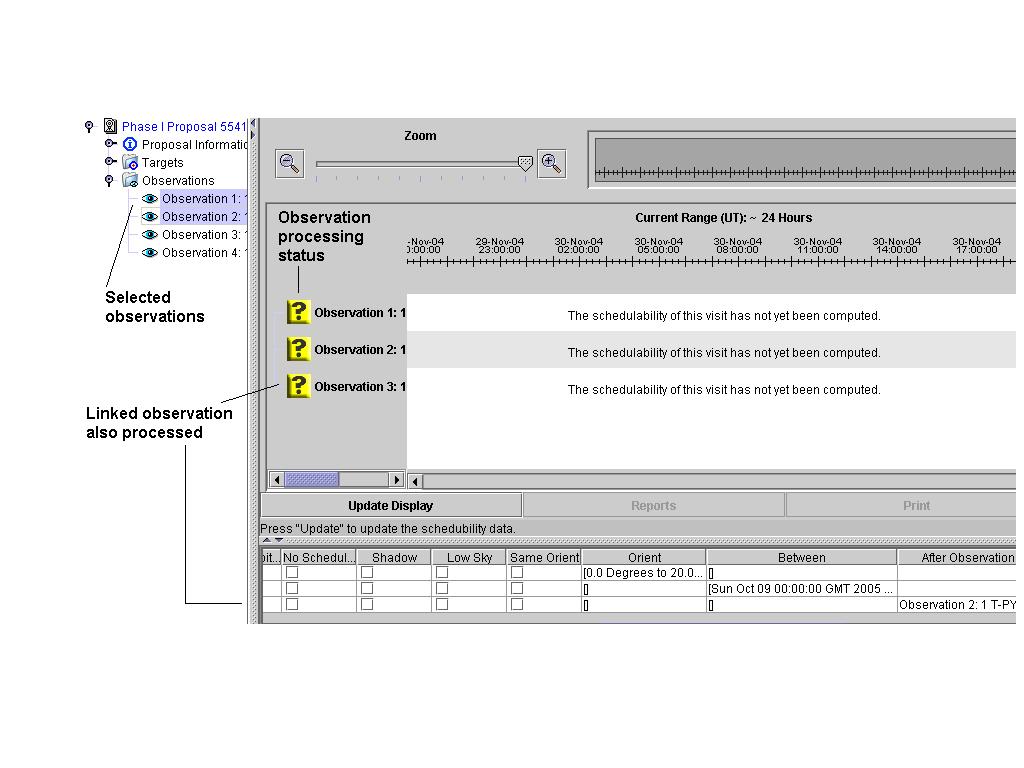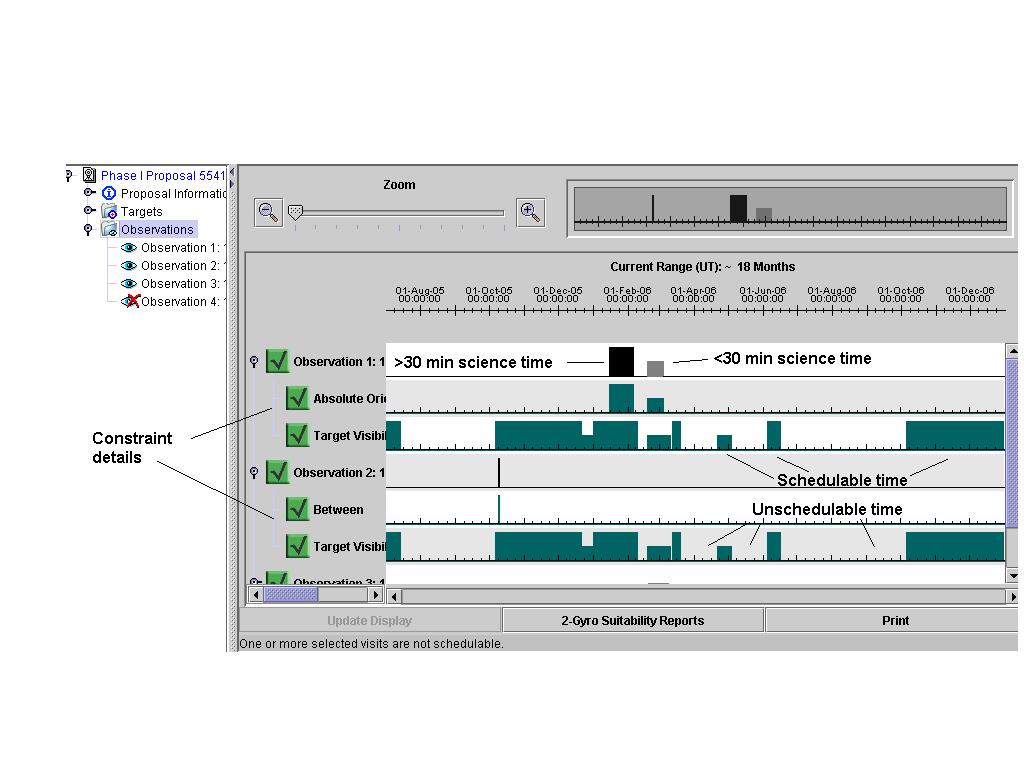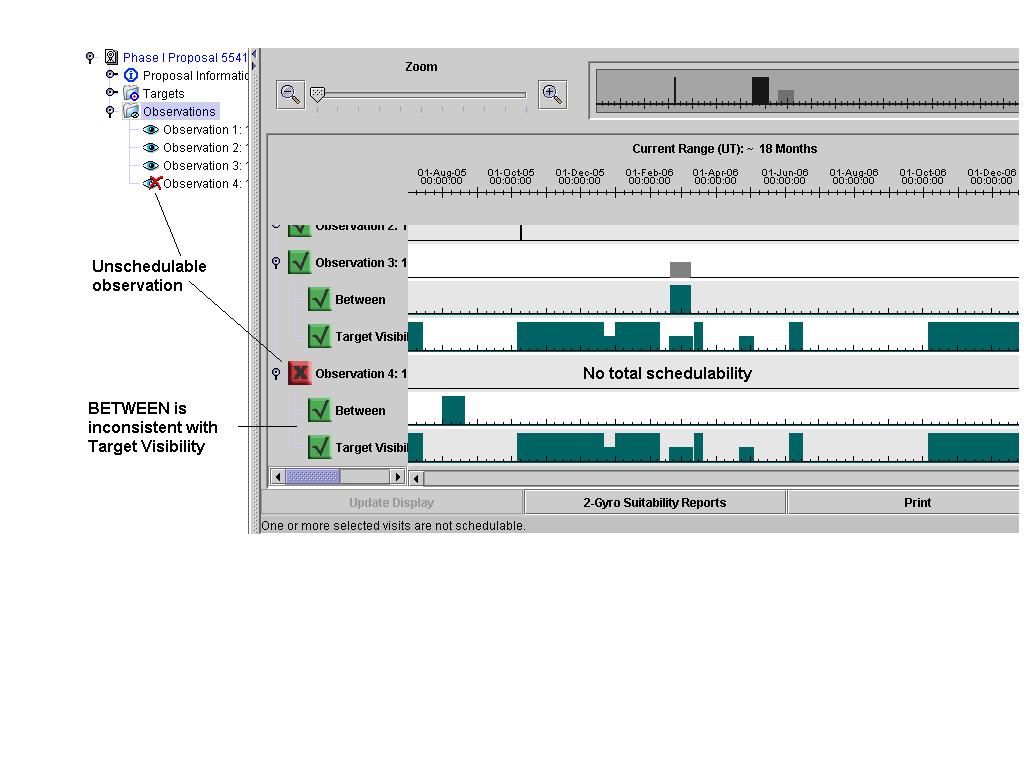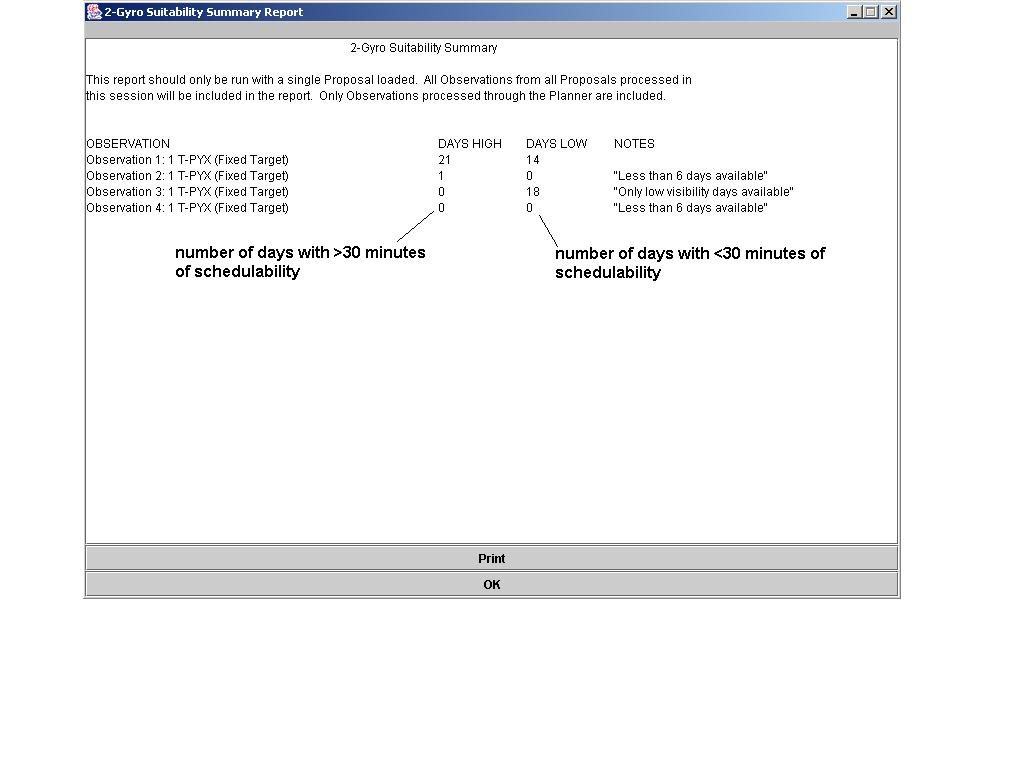
APT Analysis of Scheduling Constraints
Below are step-by-step instructions for analyzing the schedulability of your program. For a demonstration using a specific example, see the training movie.
1. Use the plots and tables available on the HST Two Gyro Science Mode Web Page to make an initial determination of the schedulability of your observations. Note that the models for orientation and visibility should be the same on the web page and in APT.
2. If you require a specific, fixed Orientation, check the scheduling impact of providing the broadest possible (within scientific contraints) orientation range for your observation.
3. If you require a non-specific, fixed Orientation (e.g. you are mosaicking a large field, and the orientation is strictly to align the tiles), then use the Orientation plots to estimate the optimal Orientations (e.g. for a mosaic, +90, +180, and +270 may be acceptable) that provide the maximum schedulability.
4. On the Observation page, fill in the relevant scheduling requirements (on PRIME observations only; observations with the CPAR flag set can use the "No Scheduling Constraints" option) as defined in the Call for Proposals; fill in both the 2 and 3 gyro sections. If you have observations of the same target/configuration that need to occur at different epochs, then you must include a separate observation for each epoch (with the appropriate scheduling requirements).

The following steps should be performed for FIXED TARGET observations only.
5. After entering any scheduling requirements, select the 2-Gyro Planner from the main Toolbar (with the Observation of interest selected in the Hierarchical (Tree) editor); if you wish to process the observation under 3-Gyro operations, select the 3-Gyro Planner. Note that if you link observations with the AFTER OBSERVATION BY, then selecting any one of those observations will cause the Planner to process all linked observations together (since all observations impact the total schedulability). Also, selecting the Observations container will select ALL observations for processing.

6. The Planner will display the Total Visibility for the Observation Block. A green check means the observation is schedulable at some time during the year, while the red x means the observation is NOT schedulable at any time. You can examine the details by clicking on the key to the left of the green check/red x. These details include:
- Target Visibility - shows when the target is visible
- Absolute Orient - shows when the specified orientation is available
- Between - shows the specified scheduling window
- Timing Link - shows when timing links (i.e. AFTER OBSERVATION BY) are schedulable


7. If the Observation is not schedulable, then examination of the details will reveal which scheduling requirements are inconsistent (e.g. the absolute ORIENT conflicts with the target visibility). Revise the scheduling requirements to make the observation schedulable, or in some rare cases, you may need to select a different target (if possible).
8. If any changes have been made to the scheduling requirements, press the Update Display button to get an updated timeline.
9. You can see a summary report for your proposal (for all observations that have been processed through the 2-Gyro (and 3-Gyro) Planner) by clicking on the Suitability Report. This report can be useful in preparing your Strategy for 2-Gyro Observations (and for Large and Treasury proposals, the required schedulability analysis).
